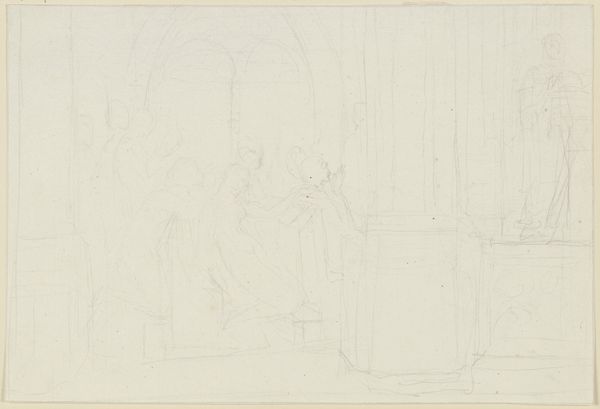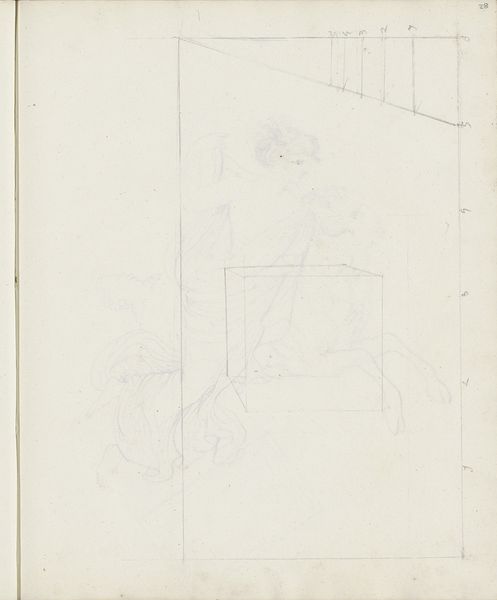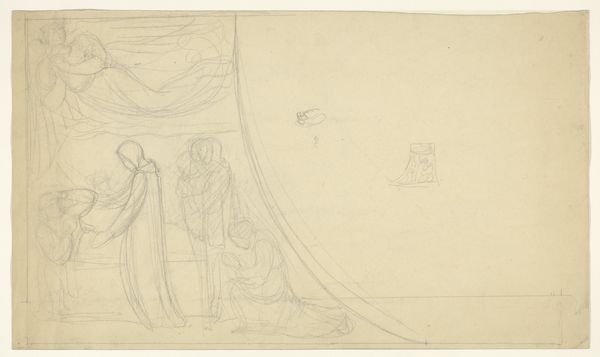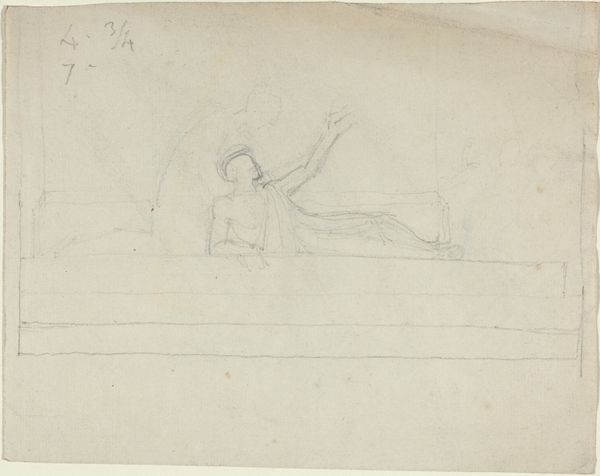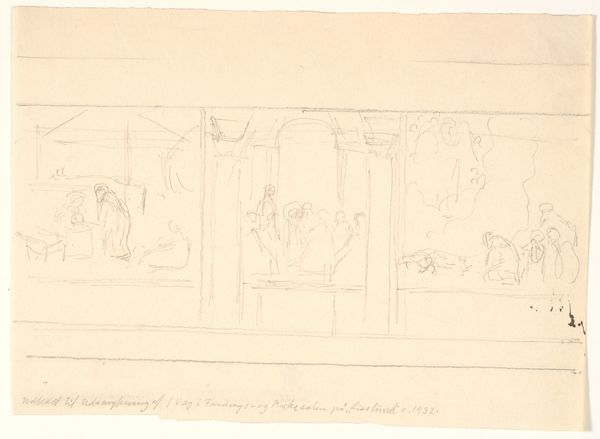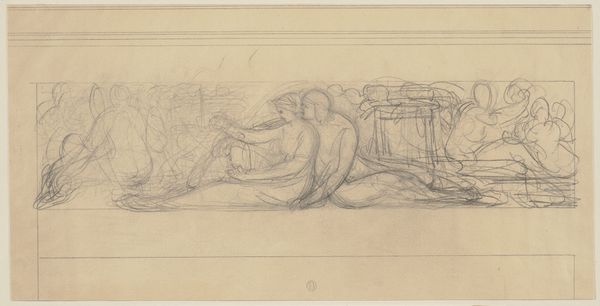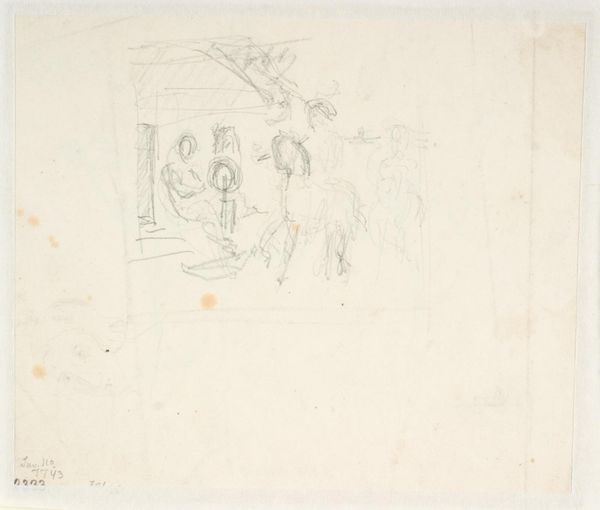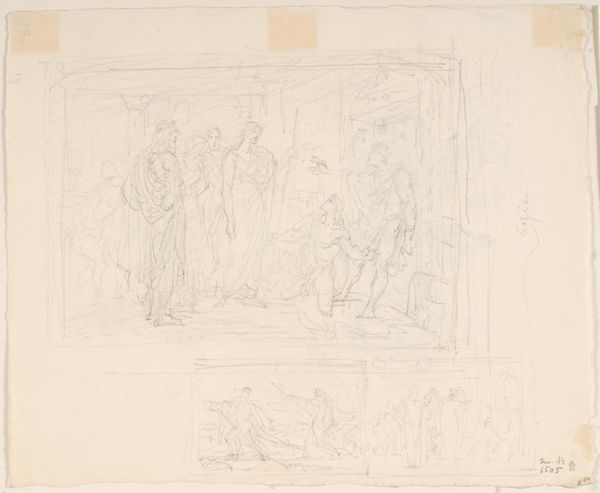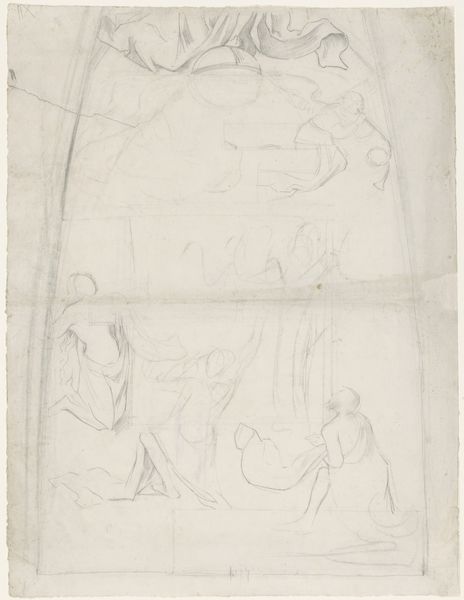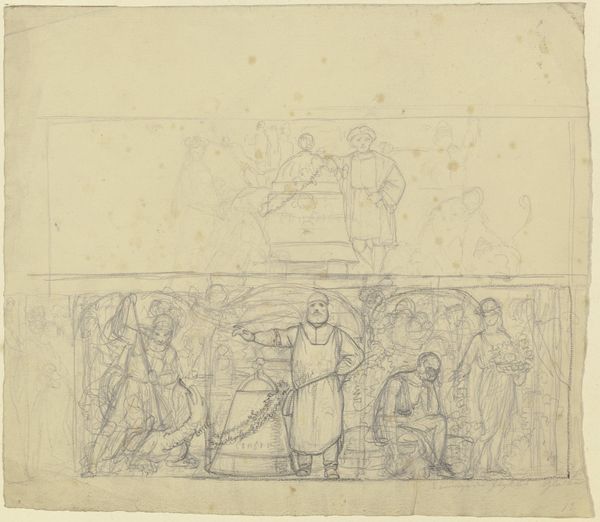
drawing, paper, pencil
#
drawing
#
impressionism
#
pencil sketch
#
landscape
#
etching
#
figuration
#
paper
#
pencil
Copyright: Rijks Museum: Open Domain
Curator: This is an intriguing drawing entitled "Figuur, mogelijk een herder, bij een groep vee," or "Figure, possibly a shepherd, with a group of cattle." It was created sometime between 1865 and 1913 and resides here at the Rijksmuseum. The piece is a pencil sketch on paper. What's your first impression? Editor: My immediate impression is one of ghostly fragility. The lines are so faint, so delicate. It feels like a fleeting memory captured in pencil. Curator: I see it too. But there's something more here than just a nostalgic impression. Given the timeframe, the shepherd figure, the animals – how does this drawing speak to changing agricultural labor and the shifting place of rural communities at the dawn of industrialization? Editor: That’s a fascinating angle. Looking at it again, the looseness of the lines, the lack of sharp detail... I think it might point to a process more focused on immediate recording than on detailed finish, revealing perhaps something about artistic production at this time. It would be interesting to know if these quick, open gestures were driven by economics. What kinds of pencils were accessible? What price of paper? Did they simply make artistic decisions depending on available materials? Curator: Absolutely. The very *act* of drawing, its accessibility, provided a voice. What does it mean to depict these rural scenes through this medium at this time? Are we looking at an imagined rural past, perhaps created in the mind of someone not even from the area and who might benefit in a new industrialized reality? Or does the simple choice of modest materials mean a solidarity, and commitment to represent them outside romanticized notions of pastoral existence. What choices had to be made? Editor: Precisely. And the relationship between the pastoral imagery and the material reality of the work – paper, pencil – reveals a lot about class. Consider the context, too. It's impressionistic, but in pencil. Does this lend itself to the kind of replication and mass consumption enjoyed by print makers? In other words, to whom did it cater? Was it ever meant to cater to the masses? Curator: Questions worth exploring. Art, material, context - each revealing deeper social dynamics. It challenges a reading based solely on the aesthetic, or the individual artistic "genius" of the artist. Editor: Exactly. By tracing the materials, their sourcing, availability and usage, the means of artistic production give voice to forgotten communities. Curator: Thanks to those material considerations, we now know so much more about its historical context and the potential challenges facing these figures. Editor: Indeed. What began as a simple sketch speaks volumes if we listen closely.
Comments
No comments
Be the first to comment and join the conversation on the ultimate creative platform.
